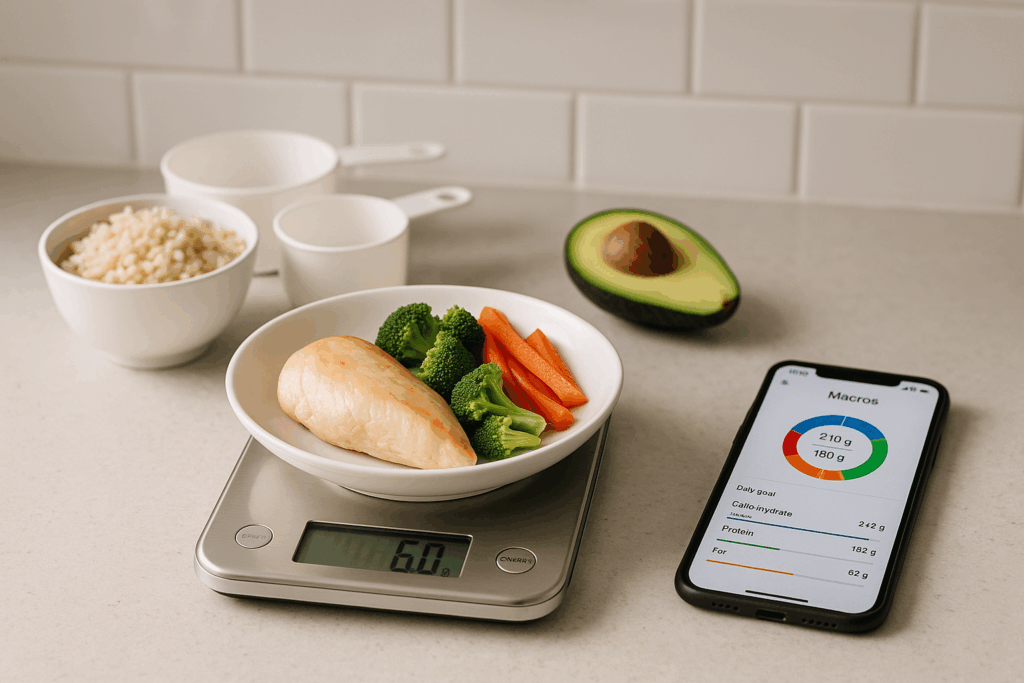Counting macronutrients—or ‘counting macros’—has become a powerful approach for those wanting to optimize body composition, athletic performance, or overall health. But does this method really deliver on its promises, and how can you stick with it long-term? In this article, we’ll explore if and how counting macros works, and the essentials for lasting success.
Understanding Macronutrients and Their Role
Macronutrients are essential nutrients that provide the bulk of energy needed for normal body function, growth, and maintenance. They comprise three main categories: proteins, carbohydrates, and fats, each serving a distinct physiological purpose. **Proteins** are composed of amino acids, acting as building blocks for muscles, enzymes, and hormones—found in foods like chicken, tofu, and lentils. **Carbohydrates**—such as rice, fruits, and bread—are the primary energy source, fueling daily activity and supporting brain function. **Fats**, from sources like avocado, olive oil, and nuts, not only supply long-term energy but are vital for hormone production, cell membrane integrity, and absorption of fat-soluble vitamins. Balancing these macronutrients underpins effective nutrition strategies since each impacts metabolism, energy levels, and overall health in unique ways.
The Science Behind Counting Macros
Scientific research supports macro counting as an effective method for aligning nutrition with personal goals, such as fat loss, muscle gain, and improved athletic performance. Unlike calorie counting, which only focuses on energy balance, macro counting tailors the proportions of protein, carbs, and fats to optimize body composition and metabolic function. For instance, higher protein intake is linked to greater satiety and muscle retention during weight loss, supported by studies published in the American Journal of Clinical Nutrition. Macro targets are personalized by considering age, sex, weight, activity level, and specific objectives—calculated using equations like the Mifflin-St. Jeor formula for energy needs, then dividing calories among macros based on goals, ensuring nutrition is both targeted and sustainable.
Practical Steps to Start Counting Macros
To begin counting macros, start by calculating your daily calorie needs using online calculators that factor in your age, weight, activity level, and goals. Once your target is set, determine your optimal macro ratios—typically, this means dividing calories into protein, carbs, and fats based on your personal objectives. Use digital tools like MyFitnessPal or Cronometer to log foods; these platforms help simplify the often detailed work of tracking. When shopping, read nutrition labels closely for serving sizes and macro content. Stay vigilant for hidden ingredients in restaurant meals and ask for nutrition information when dining out. To avoid setbacks, prep meals ahead, set realistic goals, and allow flexibility for social occasions—prioritizing consistency over perfection.
Keys to Long-Term Success with Macro Counting
Long-term success with macro counting comes from building habits that support your goals while leaving room for life’s unpredictability. Setting realistic, specific goals creates direction, but adapting them as your life evolves is essential. Incorporate flexibility by allowing occasional deviations—like during holidays, travel, or stressful weeks—without guilt. Regularly reassess your macro targets as your activity level or body composition changes. Foster a positive relationship with food by viewing macros as tools for nourishment, not as rigid rules. Practice balance by enjoying treats in moderation, supporting your mental well-being and social life. Track patterns rather than aiming for daily perfection, and remember that macro counting is most effective when it promotes overall health, not obsession or restriction.
When Counting Macros Doesn’t Work and What to Do
Despite its popularity, counting macros doesn’t always yield the anticipated benefits for everyone. In some cases, individuals might struggle due to underlying medical issues like thyroid disorders or hormonal imbalances, which can hinder progress even with perfect tracking. For others, the process can induce anxiety or an unhealthy fixation on numbers, diminishing enjoyment of food and increasing stress around eating. Poor adherence or unrealistic expectations may also sabotage results. When macro counting becomes overwhelming, alternatives such as guided mindful eating, intuitive eating principles, or working closely with a registered dietitian can restore balance. These approaches promote trust in bodily cues and foster a healthier relationship with food while supporting progress, making them valuable tools if strict macro tracking isn’t the right fit.
Conclusions
Counting macros can be a highly effective way to reach your health or fitness goals when based on sound science and realistic expectations. Success hinges on understanding your body’s needs, remaining flexible, and prioritizing well-being over perfection. If macro counting isn’t working or becomes stressful, don’t hesitate to seek expert advice or reassess your approach for lasting, healthy results.





